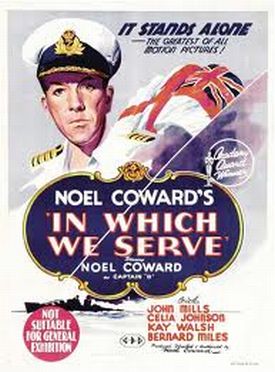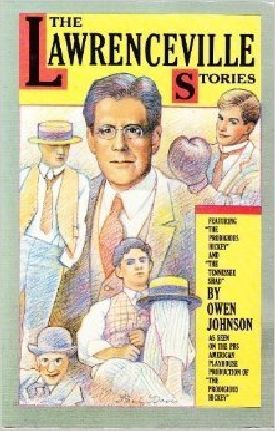Breaking the Code
From The American SpectatorNot long ago there appeared on the Turner Classic Movies channel a show called “Complicated Women” which, as Tom Shales of the Washington Post informed his readers, offered a peek into “an enlightened moment known as the ‘pre-Code era.’” — a time before the “30-year tyranny of censorship began” in Hollywood. Shales’s enthusiasm for the show came, he said, from the fact that it “celebrates pre-Code films not for their raciness” — quelle idée! — “though there are good examples of that, but for the multidimensional way women were portrayed in them. The Code, which was the work mostly of men, put the kibosh on that.”
Well, Tom, if you believe that you’ll believe anything. Though the Hays Office, like nearly every other official and public body 80 years ago, may have been staffed mainly by men, the rules it applied on behalf of the Legion of Decency types then wielding a political power that the Christian Coalition or the Moral Majority could only dream of, were overwhelmingly the product of female concerns. Then, as now, it was primarily men who got a thrill out of watching those, um, “multidimensional” women up on the big screen; then, as now, it was primarily women, especially married women and mothers, who were inclined to believe that such thrills were not good for the menfolk and should be prohibited.
As somebody who likes a skin-flick as well as the next man, I myself have never been in favor of censorship and am not now, but I think it’s time somebody put in a good word for the poor old Hays Code which, however indefensible it may have been in other ways, at least had the merit of making moviemakers work harder and more creatively. If, as Robert Frost said, free verse is like playing tennis with the net down, moviemaking without any standards as to what may and may not be shown on screen does away not only with the net but the court boundaries and sometimes the ball as well. When it comes to sex, the subtlety of an Ernst Lubitsch or a Preston Sturges is nearly always to be preferred, on purely aesthetic rather than moral grounds, to the explicitness we have come to take for granted since the Code expired in the mid-1960s.
My favorite example of a movie which profited from the strictures of the Code is Ronald Reagan’s greatest film, King’s Row. One of the central situations of the novel by Henry Bellamann on which it was based was changed from father-daughter incest to hereditary insanity in order to meet the objections of the censor. We can just imagine the reaction of today’s film-makers, for whom incest would have been much more sexily cinematic and therefore, I suppose, full of artistic possibilities. But in 1942 Sam Wood, the director, and Casey Robinson, the screenwriter, just got on with it, as one did under the code, and the result was, in my opinion, a better, more balanced film, focused on the diseases of the mind and the possibilities of their treatment rather than a sexual sin that still seems to belong — along with serial killing, that favorite movie trope of our time — among the outer limits of human perversity.
The Americanness, the optimism of King’s Row — so reminiscent of those qualities in Reagan himself during his political career — depends, it is true, on an idea of the power of science and progress to wipe out the causes of human misery which now must seem rather naVve, to say the least. Psychotherapy, instead of eliminating the sources of mental and social pathology in the same way that the Victorians had eliminated the sources of cholera, has only offered us the dubious opportunity all to be victims, albeit victims without much hope of a cure. But the belief that it could do so much more, still fresh in 1942, was a noble hope which therefore makes for a noble film in a way that it could hardly have done if sin and sickness had been the focus, as they could hardly have failed to be in a story of incest.
But in no case has the benefit of the Hays Office been more evident than in that of film noir. Because the Code specified that movies would not depict criminals profiting from their crimes, all the great noir pictures ended with criminal anti-heroes coming to a bad end. Yet the effect was not the one that the censor presumably intended, namely a ringing affirmation of the moral order. Instead his failure only confirmed us in our sympathy for the criminal. He had become the American everyman — rather like the hero of Dreiser’s An American Tragedy, a novel which foreshadowed the noir ethos — who dared to reach above his station to try to help himself to some of the good things of the world and who was crushed by the massive weight of a moral and social order which seemed stacked against him.
Whether this nay-saying power was conceived of as a malign God, or Fate, which had somehow decreed the hero’s exclusion from social and economic grace, or as the then-popular bogey known as “the capitalist system” the point was the same. The moral order would be upheld, all right, but the hearts of the audience would be with him — or her — whom it had so seemingly casually destroyed. This romantic defiance of Fate, this fist shaken in the face of God, seems to me to have been a regrettable development in social, moral and religious history, but it is undeniably potent aesthetically. And the attitude it betokened was what led to the creation of a significant proportion of the great films of Hollywood’s golden age.
What has happened since the end of the Hays Code in the 1960s, and its replacement by the Motion Picture Association’s “rating” system (G, PG, PG-13, R) with its exaggerated reverence for consumer choice, has been an aesthetic and moral collapse of standards, especially in the last decade or so, and a spate of caper films in which the crooks get away with the swag and live happily ever after. These are what I call prison fantasies, since they dramatize and therefore flatter the belief of every career criminal that there will be one big score which will allow him to live like a petty grandee in some sun-soaked kingdom by the sea. Like other sorts of fantasy, this one seems to me to have no aesthetic function, since art crucially involves some kind of corrective to the expectation of uncomplicated fulfilment.
A hero, that is, who is not changed by his experiences is essentially a comic-book hero — which is arguably what our contemporary culture of immaturity really wants. Certainly it is what we mostly get these days from Hollywood, where the focus group or test audience has taken the place of the Hays Office in determining what is or is not acceptable on screen. As in the past, directors may make a wry comment on the constraints thus imposed on them. In Steven Soderbergh’s Out of Sight (1998) the bandit hero, played by George Clooney, cuts through the prevailing atmosphere of unreality by asking at one point: “Do you know anyone who had one last big score and then went on to live the good life?” But the film, in love with the unreality, then goes on to hint that he himself does!
It is a typically postmodern touch, suggesting almost a kind of modesty, perhaps, in its refusal to attribute any moral purpose to the universe, either for good or for ill. Relieved of the burdens of God and Fate, the little man has stopped being crushed and pathetic and started turning into the vulgar boor he always aspired to be. In film after film — Goodbye Lover, 3000 Miles to Graceland, Diamond Men, The Score, Sexy Beast, Swordfish, What’s the Worst that Could Happen? Where the Money Is, Heist, Bandits just to name a few that come to mind from the last five or six years — the prison fantasy is repeated, the crooks ending up on a Mexican beach still holding on firmly to their ill-gotten gains. Sometimes, as in The Shawshank Redemption it is a literal prison fantasy.
Even remakes of classics like Ocean’s Eleven and Jean-Pierre Melville’s Bob le Flambeur, remade by Neil Jordan as The Good Thief, also remake their endings to give the criminal heroes the rewards of their criminality. As in Confidence, another recent example of the genre, the idea behind such films is usually that we should admire the thieves — The Good Murderer is still less common though not unknown — for the cleverness with which their thievery is managed without reference to its moral implications. This dovetails nicely with the postmodern aesthetic which invites us to admire the cleverness of the film-maker without reference to the truth or falsehood of what he has to say.
Not that there is no moral dimension. We may be called on to sympathize with the clever rather than the poor but honest hero, but there are shreds and patches of the old world order in the fact that he is usually a small-time operator getting the better of a big-time one, or a corporation. In Confidence, for example, the young and attractive and relatively impecunious con-man played by Ed Burns puts one over on an older and less attractive and well-to-do con-man played by Dustin Hoffman as well as a banker — enough said! — played by Robert Forster. In Bandits the wacky, fun-loving ménage B trois of bank robbers played by Bruce Willis, Billy Bob Thornton and Cate Blanchett justify themselves to themselves on the grounds that the banks’ deposits are insured by the Federal government, which is said to steal its money from the people in the first place. So they are really only impatient supply-siders with a bit of gumption.
In this, at any rate, the prison fantasy movies are probably true to actual prison fantasies, which are quite likely to regard governments, large corporations and banks as being hardly moral entities at all but simply centers where money is concentrated for the convenience either of their corrupt executives and governors or the thieves who are no worse but are cleverer, or younger, or more attractive than they. It would probably be pointless either for government or for the industry itself to forbid movie-makers to teach such pernicious nonsense to the young teens who so largely make up their audience. But moms and dads ought to know that that is what is being taught.
Discover more from James Bowman
Subscribe to get the latest posts to your email.







